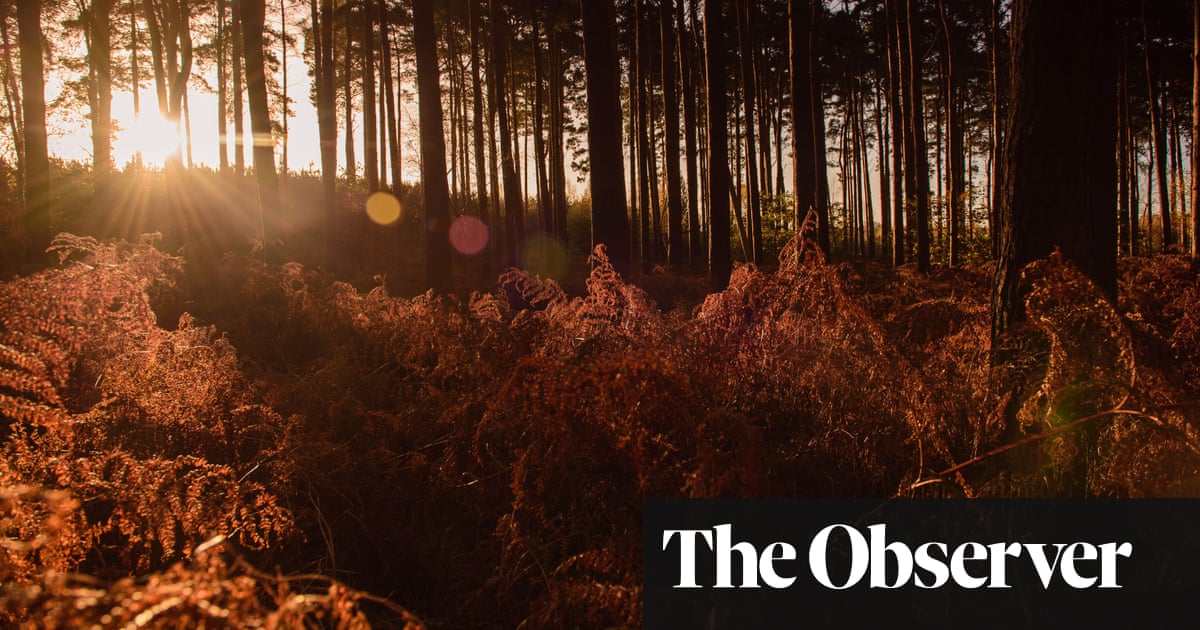Karen Solie’s Wellwater – A distressed landscape captured by original candid | Poems

It is human, preferring our landscape neatly framed – walls and wooden fences create a fantasy of controlling and containing large outdoor activities. However, Karen Solie’s extensive predicted collection Well water Flip the script. In this honest catalog of human-made harm and harm, we celebrate the contemporary landscape that refuses to tame.
Solie teaches at Standrews in Scotland, and was born in Moose Jaw, Saskatchewan, western Canada, where the vast prairie provides most of the world’s pulse crops. This fertile Well waterBut, seem tired of endless service. This poem Red Spring witnesses “Every year weeds are not eliminated, and there are some smarter things every year.” They almost bravely tried to outperform the “zombie technology” that Solie condemned, and its genetically modified “terminator seeds” sprouted “terrifying plants” that were “more important than living.”
In the less apocalyptic pastoral scene, there are some peaceful flickers, like “the white-tailed deer sleeps in a wild chokecherry/sleeps in a hollow room”, while the smoke-filled rain falls down the “House of the Sky” like the Five Confetti. But for most of this poetry, like in the pine trees, the landscape is distorted in “difficult”. The page of fungicide and glyphosate is a herbicide that is linked by the poet to the case of non-Hodgkin’s lymphoma: “Ask Solie insists on cleaning the sprayer/the crew by blowing its nozzle,” Solie insists, “they can’t look back.”
This shocking correlation, after examination, When the poet admits his flaws, it inspires a refreshing honesty: “I don’t know how to make this beautiful,” she admits. “Can we go back? Meet each other in old knowledge?” If we can do it, it is the tragic pain of these poems–on the grassland, braids, hats and beautiful sweet life will not be further away.
In the ill-watch landscape and the trembling aftershocks of fracturing and radiation, each word droops from the “threatening low buzz.” Any last picturesque echo of expectation carries the debris of post-industrial horror – it spills with treasure chests of toxic waste from oil and oceans.
It is not just the “bad landscape” that is seen violently. Soli also ate a “bad sandwich” in the bad apartment. The worst thing about these hellish bolt holes is “windowless and bug-ridden”, and in Toronto they are spectacularly reconceived as “tiny museums that are illegal.” Here is the real gem Well water The glittering sight reinforces an amazing basic premise: we are all bad landlords of the Earth we call home. Or, in general, we are bad tenants because her condemnation of “greed and neglect” encourages us to admit it more humbly.
In the basement suite, the childhood image is the image of a room with prohibited windows, and the door between the squeaky size of the antelope is also fascinating. Sometimes you want the Solie to last longer, allowing us to enter completely. Some ideas are still temptingly locked in, but her imagination thrives in the trees of Riverdale Park, where our plant cousins are somehow “thriving like people who understand”. So, while some of these stones feel uncut, their expected meaning is unresolved, the original candor of her reflection still fascinates us.
Surprisingly, the profound observations in Orion explain “how the dead are more kind than life//if you have nothing to do with them”, while in the Bluebird, “normal and bad are always opposite.” But what is clear is the ego and content, the framework Well water With its fascinating figure of the same name – dark and deep secrets and surprises.




